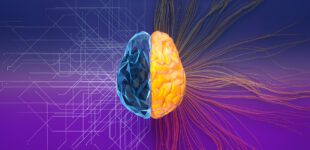April 25, 2024
In 2021, a group of researchers set out to quantify just how hot the topic of ethics of artificial intelligence had become. They searched Google Scholar for references to AI and ethics. What they found showed a remarkable uptick in this field. In the over three decades spanning 1985 and 2018, they found 275 scholarly articles focusing on the ethics of artificial intelligence. Those journals published 334 articles in 2019 alone – more than they had in the previous 34 years combined. In 2020, an additional 342 articles were published.
Research into AI ethics has exploded, and much of it has focused on guidelines for building AI models. Now, AI-based tools are widely available to the public. That’s left schools, businesses and individuals to figure out how to use AI ethically – in a way that is safe, free of bias and accurate.
“Much of the public is not yet sufficiently informed or prepared to use AI tools in a fully responsible manner,” said IEEE Member Sukanya Mandal. “Many people are excited to experiment with AI but lack awareness of potential pitfalls around privacy, bias, transparency and accountability.”
Hallucinations and Inaccuracies: The Biggest Pitfalls for AI Users
Because of the way they are built, most generative AI models are prone to hallucinations. They simply make things up, and the seemingly authoritative results give the appearance of confidence. That’s a risk for users, who may pass on false information. In the U.S., lawyers using generative AI learned this lesson the hard way when they attempted to use chatbots to draft legal documents, only to discover that the AI made up nonexistent cases they cited as precedent in their arguments.
“AI may not always be accurate, so its information needs to be checked,” said IEEE President Tom Coughlin.
Can We Trust The Decisions AI Makes?
Artificial intelligence models are trained on massive amounts of data, and sometimes they make decisions based on extremely complex mathematical functions that are difficult for humans to understand. Users often don’t know why an AI has made a decision.
“Many AI algorithms are ‘black boxes’ whose decision-making is opaque,” Mandal said. “But particularly for high-stakes domains like healthcare, legal decisions, finance and hiring, unexplainable AI decisions are unacceptable and erode accountability. If an AI denies someone a loan or a job, there must be an understandable reason.”
What Happens if We Trust AI Too Much?
Because AI models are trained on such large datasets, they could lull users into a false sense of confidence, causing them to accept decisions without question.
In “The Impact of Technology in 2024 and Beyond: an IEEE Global Study,” a recent survey of global technology leaders, 59% of respondents identified “inaccuracies and an overreliance on AI” as one of their organization’s biggest concerns when it came to the use of generative AI.
Why Is It Important To Know What Data Was Used to Train an AI Model?
Imagine this: An AI model used is trained to screen applicants for a job. It forwards resumes to hiring managers based on data collected over prior years, and is trained to identify people most likely to get the job. Except, the industry has traditionally been male dominated. An AI could learn to identify women’s names, and thus automatically exclude those applicants, based not on their ability to do the job, but on their gender.
Such algorithmic biases can and do exist in AI training data, making it very important for users to understand how models were trained.
“Ensuring unbiased data is a shared responsibility across the AI development lifecycle and an ongoing process,” Mandal said. “It starts with those sourcing data being cognizant of the risk of bias and using diverse, representative datasets. AI developers should proactively analyze datasets for bias. AI deployers should monitor real-world performance for bias. Ongoing testing and adjustment is needed as AI encounters new data. Independent audits are also valuable. No one can abdicate bias mitigation solely to others in the chain.”
Should You Tell People When Artificial Intelligence Is Used?
Disclosure is emerging as a key tenet of AI use. When an AI makes a decision in healthcare, for example, patients should be told. And social media sites also require creators to disclose when AI was used to make or alter a video.
“Ethical AI usage hinges on properly handling information, including source citation and adherence to existing guidelines,” said IEEE Senior Member Cristiane Agra Pimentel. “Several publications now permit AI use, provided the writer cites the AI that was used and the date it was used.”
Learn more: How will AI change the way researchers write and publish? A new column in Computer magazine from the IEEE Computer Society argues that academic articles should begin including AI metadata that would allow researchers to study the effects of AI on writing and research.





 Meaningful Momentum or Running in Place?
Meaningful Momentum or Running in Place? AI Through Our Ages
AI Through Our Ages Liquid Infrastructure: Our Planet's Most Precious Resource
Liquid Infrastructure: Our Planet's Most Precious Resource The Impact of Technology in 2025
The Impact of Technology in 2025 Quantum and AI: Safeguards or Threats to Cybersecurity?
Quantum and AI: Safeguards or Threats to Cybersecurity? Why AI Can't Live Without Us
Why AI Can't Live Without Us Bits, Bytes, Buildings and Bridges: Digital-Driven Infrastructure
Bits, Bytes, Buildings and Bridges: Digital-Driven Infrastructure Impact of Technology in 2024
Impact of Technology in 2024 Emerging AI Cybersecurity Challenges and Solutions
Emerging AI Cybersecurity Challenges and Solutions The Skies are Unlimited
The Skies are Unlimited Smart Cities 2030: How Tech is Reshaping Urbanscapes
Smart Cities 2030: How Tech is Reshaping Urbanscapes Impact of Technology 2023
Impact of Technology 2023 Cybersecurity for Life-Changing Innovations
Cybersecurity for Life-Changing Innovations Smarter Wearables Healthier Life
Smarter Wearables Healthier Life Infrastructure In Motion
Infrastructure In Motion The Impact of Tech in 2022 and Beyond
The Impact of Tech in 2022 and Beyond Cybersecurity, Technology and Protecting Our World
Cybersecurity, Technology and Protecting Our World How Technology Helps us Understand Our Health and Wellness
How Technology Helps us Understand Our Health and Wellness The Resilience of Humanity
The Resilience of Humanity Harnessing and Sustaining our Natural Resources
Harnessing and Sustaining our Natural Resources Creating Healthy Spaces Through Technology
Creating Healthy Spaces Through Technology Exceptional Infrastructure Challenges, Technology and Humanity
Exceptional Infrastructure Challenges, Technology and Humanity The Global Impact of IEEE's 802 Standards
The Global Impact of IEEE's 802 Standards Scenes of our Cyber Lives: The Security Threats and Technology Solutions Protecting Us
Scenes of our Cyber Lives: The Security Threats and Technology Solutions Protecting Us How Millennial Parents are Embracing Health and Wellness Technologies for Their Generation Alpha Kids
How Millennial Parents are Embracing Health and Wellness Technologies for Their Generation Alpha Kids Space Exploration, Technology and Our Lives
Space Exploration, Technology and Our Lives Global Innovation and the Environment
Global Innovation and the Environment How Technology, Privacy and Security are Changing Each Other (And Us)
How Technology, Privacy and Security are Changing Each Other (And Us) Find us in booth 31506, LVCC South Hall 3 and experience the Technology Moon Walk
Find us in booth 31506, LVCC South Hall 3 and experience the Technology Moon Walk Virtual and Mixed Reality
Virtual and Mixed Reality How Robots are Improving our Health
How Robots are Improving our Health IEEE Experts and the Robots They are Teaching
IEEE Experts and the Robots They are Teaching See how millennial parents around the world see AI impacting the lives of their tech-infused offspring
See how millennial parents around the world see AI impacting the lives of their tech-infused offspring Take the journey from farm to table and learn how IoT will help us reach the rising demand for food production
Take the journey from farm to table and learn how IoT will help us reach the rising demand for food production Watch technical experts discuss the latest cyber threats
Watch technical experts discuss the latest cyber threats Explore how researchers, teachers, explorers, healthcare and medical professionals use immersive technologies
Explore how researchers, teachers, explorers, healthcare and medical professionals use immersive technologies Follow the timeline to see how Generation AI will be impacted by technology
Follow the timeline to see how Generation AI will be impacted by technology Learn how your IoT data can be used by experiencing a day in a connected life
Learn how your IoT data can be used by experiencing a day in a connected life Listen to technical experts discuss the biggest security threats today
Listen to technical experts discuss the biggest security threats today See how tech has influenced and evolved with the Games
See how tech has influenced and evolved with the Games Enter our virtual home to explore the IoT (Internet of Things) technologies
Enter our virtual home to explore the IoT (Internet of Things) technologies Explore an interactive map showcasing exciting innovations in robotics
Explore an interactive map showcasing exciting innovations in robotics Interactively explore A.I. in recent Hollywood movies
Interactively explore A.I. in recent Hollywood movies Get immersed in technologies that will improve patients' lives
Get immersed in technologies that will improve patients' lives